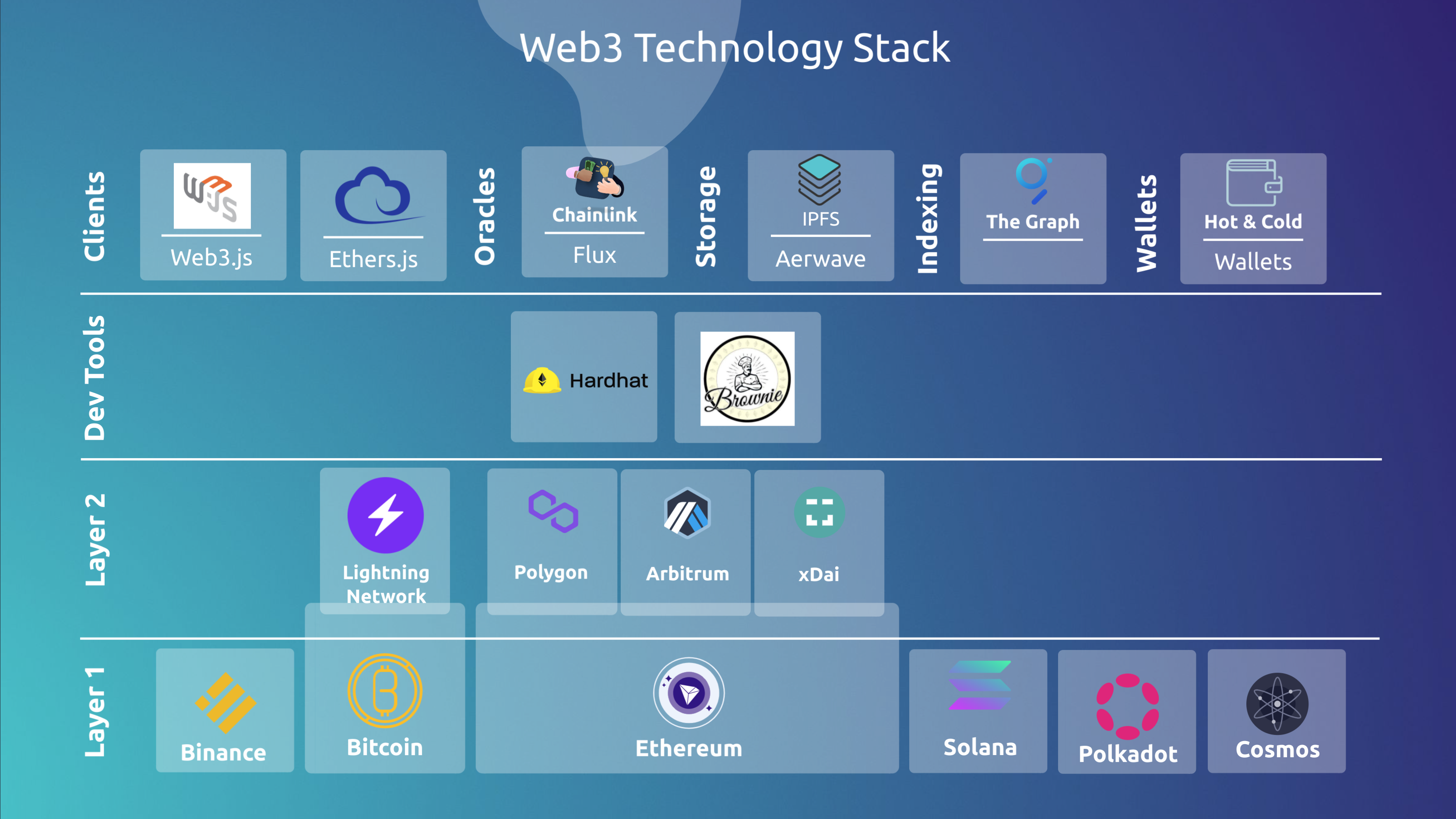
Web3 stack software#
As a result, if a feature or bug related to the service tier was logged, the same developer who just finished a client-related task could pick up the ticket and be productive.įor those interested in reading my thoughts on full-stack development (written during the height of this buzzword craze) click the link below:ĭespite one’s opinion of full-stack developers, the focus now should shift to thinking about what the web3 stack looks like and how software engineers will introduce features and functionality in this next generation of web development.ĭiving into web3 in detail would involve a lengthy series of articles. The Full-Stack Developer term gained momentum around 2015, offering the benefit that a single software engineer could contribute to any level of the software stack. Transforming from Full-Stack to Web3 Stack Let’s put debate aside and instead look at how you, as a developer, can explore the technical side of this new web3 world. All three will have their place in the future. Something else to mention is that web3 is not expected to replace web2, in the same manner by which web2 did not replace web1.

How close to this ideal web3 has come or can come-and if it’s a good thing or not-is an in-depth conversation with many strong (and strongly biased) opinions. There is no centralized company or government in control and making the rules.

Anyone, anywhere in the world with an internet connection can freely trade, sell, and build upon those items. The key to all of the above, of course, is that the ownership of the digital currency-DAO membership, music rights, and so on-is in the hands of the user and controlled by the user. Play-to-earn games (p2e) where users can earn a living by playing a game (such as Axie Infinity).Ad-hoc formation of groups with a like purpose through decentralized autonomous organizations (DAO), such as the Constitution DAO or social DAO Friends with Benefits.Provable digital ownership of digital items, such as music, art, and more through the utility of NFTs.A permissionless financial system (Bitcoin and other digital currencies that enable permissionless loans, currencies, investing, and so on).Personal identity controlled by the user, not a corporation (such as MetaMask).The protocol to create such a datastore (which began with Bitcoin and continued with protocols such as Ethereum and others) is the foundation of web3 and opens a wide variety of new use cases, such as: So instead of one entity owning the data, multiple nodes (computers running the blockchain) store the data and come to a consensus about whether the data is valid or not. The data is stored on the public ledgers of a blockchain network. Web3 creates a permissionless datastore where no one person or corporation controls or owns the data, yet that data is still guaranteed to be true. Web3 provides an alternative for the web2 reality where control is centralized into a handful of technology providers such as Google, Apple, and Amazon.

The landscape is still wide open for Web3 pioneers. Web3 - decentralized design, incorporates blockchain technologies (since 2009, but has really gained momentum over the last several years).In fact, the distributed nature in how blockchain is designed ties directly to the heart of Web3.īefore going any further, let’s recap the three main eras of the web: While products like GenCoin originated with the purpose of providing a new way to perform financial transactions, the underlying concepts are more powerful than just currency-related tasks. As I watched the show, I wondered how my life would be different if I were a member of the engineering team driving GenCoin adoption. The three-season series features the challenges faced by a cast of characters to create “GenCoin,” a new (and fictional) digital currency. Last summer, my wife and I watched a program called “ StartUp” on Netflix.


 0 kommentar(er)
0 kommentar(er)
